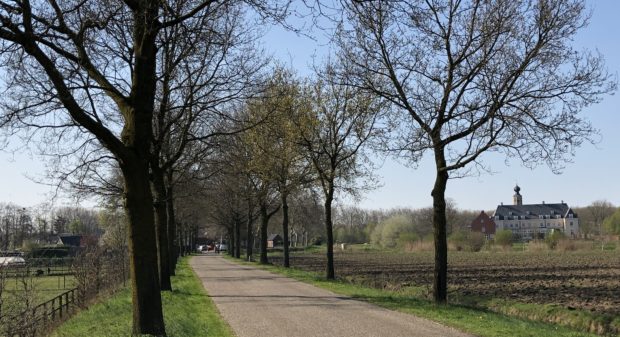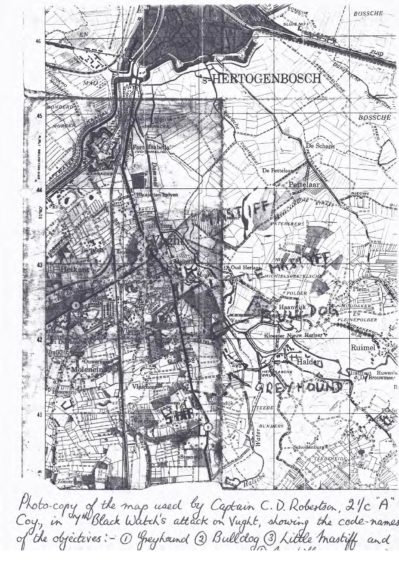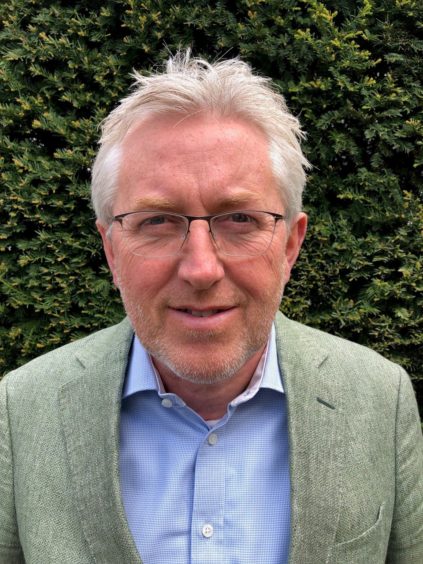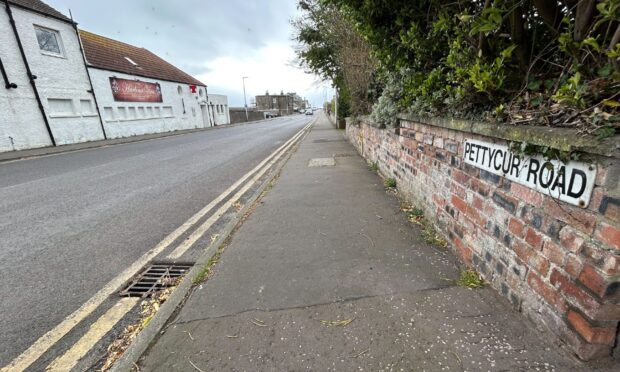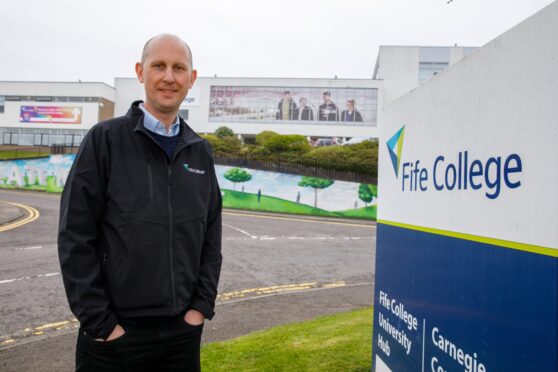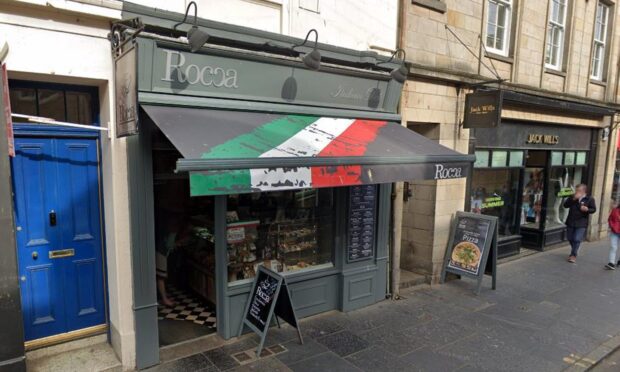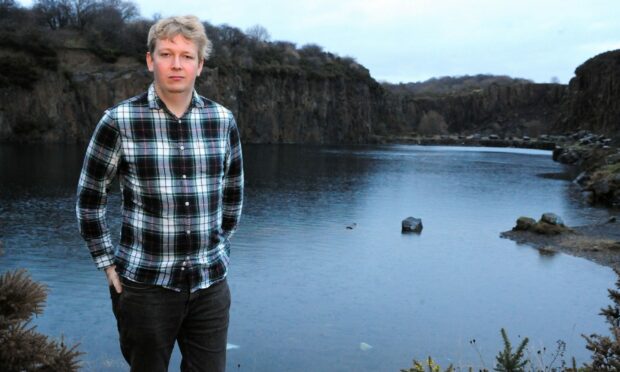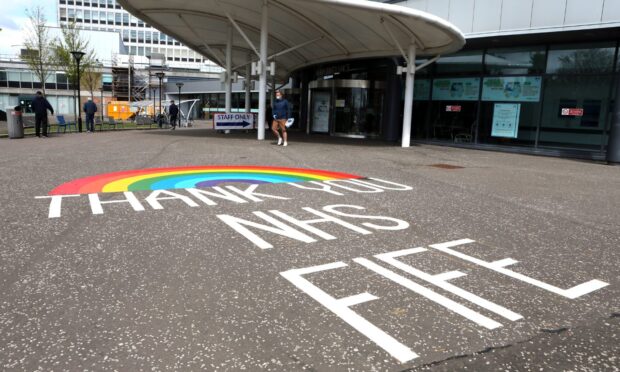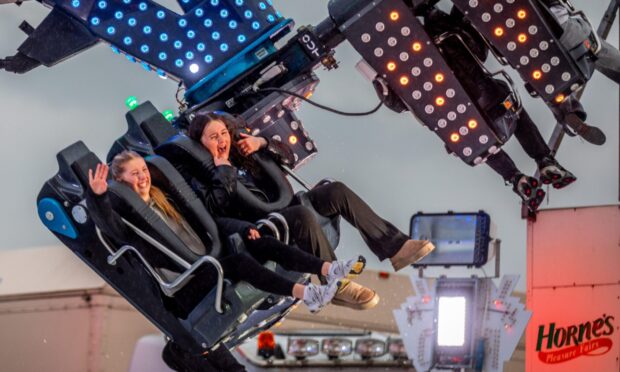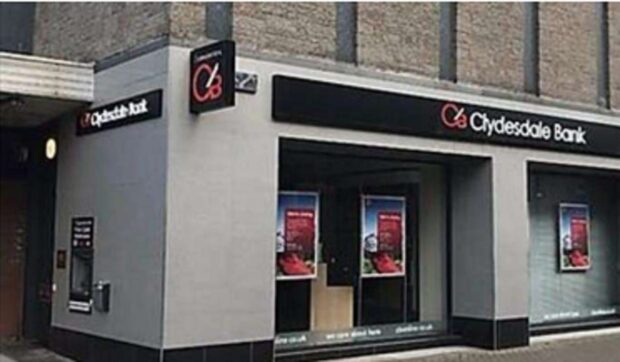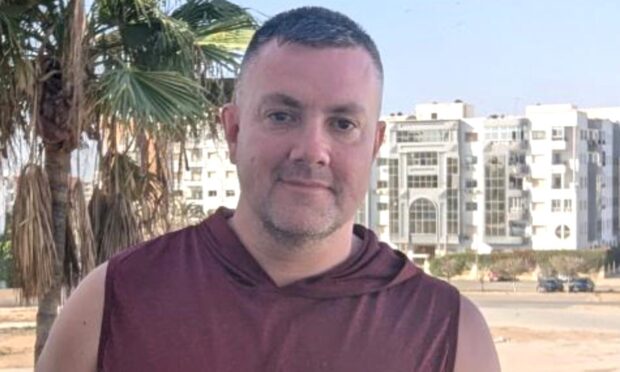A small village in The Netherlands is marking the 75th anniversary of its liberation by the Allies and a Fifer who helped bring peace to the region.
Dutch historian Wim Kievits is searching for Major Charles D Robertson, who was known to have lived in Newport-on-Tay.
He possessed an intriguing document, adorned with handwritten notes, which showed his role in the battle to free the area from Nazi Germany.
The country marks Dodenherdenking – remembrance of the dead – on Saturday and Bevrijdingsdag – Liberation Day – the following day.
Vught today is a peaceful village in the southern part of the Netherlands lying to the south of ‘s-Hertogenbosch.
Seven decades ago the Allies, most notably British and Commonwealth troops, fought for its liberation in September and October of 1944, almost immediately after the hard fought battle of Market Garden, recounted in the epic movie A Bridge too Far.
Although the daring airborne operation to secure the crossings over the Rhine and advance into northern Germany ultimately failed, the courage shown by the allied forces made it one of the Second World War’s most famous battles.
All the units of the 51st Highland Division formed “a massive machinery” continually on the move to bring down the German occupation of Antwerp. Vught and the larger city of ‘s-Hertogenbosch was on their route and the 7th Black Watch became one of the liberating units.
Mr Kievits said when the community marked the 50th anniversary of its liberation, contact was made with Major Robertson and he had a piece of the map he had used on the day of the attack on Vught which he’d kept in his war-time scrapbook.
He hopes it can be made available, or copied, to go on display in the Netherlands later this year and be included in a book as part of a project run by the local heritage foundation of Vught.
Mr Kievits said: “The document is a great historical evidence of what happened in those October days and it is absolutely great that at least until 1994 Charles had kept it amongst his possessions.
“Right now we are extending the research of previous years because it may be the last time that we can interview some eye witnesses of those days in our town.
“We’d love to talk to our liberators in more detail but as you can imagine most unfortunately have gone and those who remain are very fragile.”
The local researchers hope to unearth new information for the book and exhibition about the difficult military tactics of the allies and the German forces.
“The map of Charles Robertson is one of the best details we have ever seen, and we really would love to obtain a copy for exhibition purposes.”
Although Mr Kievits never met Mr Robertson he has all his correspondence leading up to the commemoration of 1994.
After that, and although reunions were held, the trail goes cold.
The historian has already been in touch with the Black Watch museum but they were not able to help in providing Mr Robertson’s map.
“Therefore, I think that this precious and historic treasure of their heroic father, and/or grandfather, might still be in the family relatives’ possession.
“I thought this might be the last chance to get into contact and see if they still have his war archives and are willing to share a copy with us for the exhibition.”
If you know Major Robertson, or are a family member, contact leclark@thecourier.co.uk or Mr Kievits can be contacted on wamkievits@ziggo.nl.
